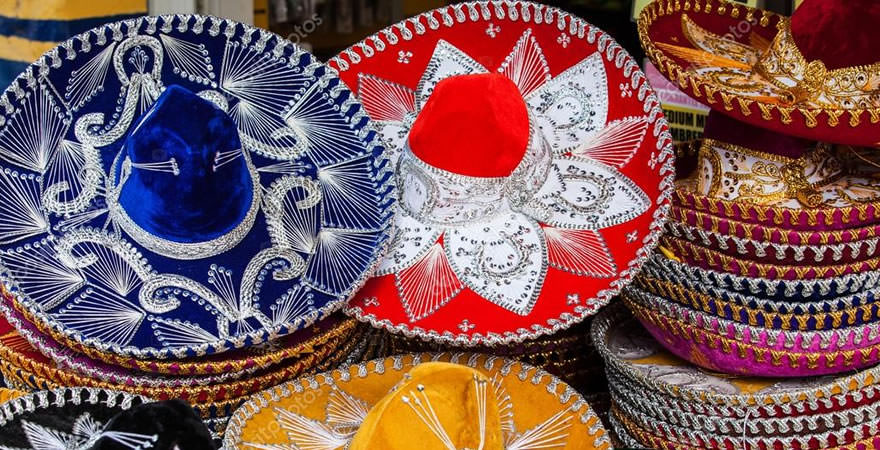
Sombrero Mexicano
The word “sombrero” means “hat” (“shadower”) and refers to a type of wide-brimmed hat from Mexico, used to shield from the sun. Also called the “poblano”, these hats with crowns and wide brims came from Spain.
A sombrero usually has a high-pointed crown, an extra-wide brim (broad enough to cast a shadow over the head, neck, and shoulders of the wearer, and slightly upturned at the edge), and a chin string to hold it in place.
In Spanish, sombrero refers to any wide-brimmed hat.
Sombreros, like the cowboy hats invented later, were designed in response to the demands of the physical environment. The concept of a broad-brimmed hat worn by a rider on horseback can be seen as far back as the Mongolian horsemen of the 13th century.
In hot, sunny climates hats evolved to have wide brims, which provided shade. The exact origin of the Mexican sombrero is unknown, but it is usually accepted that the hat originated with Mestizo cowboys in Central Mexico.
Although sombrero is usually taken to refer to traditional Mexican headwear, the term sombrero predates this item of clothing and is and has been applied to several different styles of hat, since it is the actual word for a hat in Spanish.
Other types of hats known as sombrero can be found in South America and Spain, including the sombrero calañés, sombrero cordobés and sombrero de catite (Spain), sombrero vueltiao (Colombia).
Cultural influence
Many early Texan cowboys adopted the Mexican wide-brim sombreros.
Also called the poblano, these hats came from Spain. In the Western of the USA, the sombrero had a high conical or cylindrical crown with a saucer-shaped brim, highly embroidered and made of plush felt.
The Mexican variation of the sombrero added an even wider brim and a high, conical crown. These are the hats worn by mariachi musicians and charros. Both types of sombreros usually include a chin strap.
In the Philippines, due to the influence from Spain brought about by the Manila galleon trade. The term has been assimilated in the form of “sumbrero” and now refers to any hat, from actual sombreros to baseball caps.
- The galaxy Messier 104 is known as the Sombrero Galaxy due to its appearance.
- Similarly, Tampa Stadium was also known as “The Big Sombrero”.
Sombrero Festival
Sombrero Festival, also known as Sombrero Fest, is a two-nation fiesta and an annual three-day pre-Lenten celebration held in Brownsville, Texas, United States. The grito—a joyous Mexican shout—opens the festivities every year.
This festival is a shared heritage celebration between the two border cities of Matamoros, Tamaulipas, and Brownsville, Texas. This festival is designed to enhance the spirit of Charro Days and to add to the festivities.
The Sombrero Festival is held in Washington Park in Brownsville, Texas. It was founded in 1986 by Danny Loff in order to enhance the spirit of Charro Days and to expand the activities available to the general public.
The Sombrero Festival includes a jalapeño eating contest, run/walk contests, music and dancers, food booths, and cooking competitions. The festival also features rock stars, corrido singers, and Tejano music performers.
Mr. Amigo Association, an organization that works for a friendly relationship with Matamoros and Brownsville, and to preserve the Charro Days and Sombrero Festival celebrations, became a part of Charro Days in 1967.
Sombrero Fest, a three-day Washington Park street party was added in 1986. It is worth mentioning that the first president of the Mr. Amigo Association was the former president of Mexico, Miguel Alemán Valdés.
During the 1988-1989 NAFTA agreement, the Mister Amigo Association was presented with the Mister Amigo Review Award for being one of the first organizations to spread friendship between the USA and Mexico.
Let us know if this article was useful for you